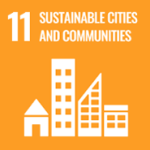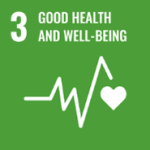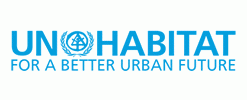
Areas of Impact
Country
A project to reclaim the streets for pedestrians and cyclists in Ethiopia, Guinea, Kenya, Mozambique and Rwanda, implemented by UN-HABITAT, was launched on 2 March 2022. Find out more about the project that will lower traffic injuries and fatalities in African cities.
African cities will gain over 900 million new residents by 2050, making Africa the most rapidly urbanizing region in the world.
At the same time, the infrastructure for active mobility is often lacking or in poor condition, causing severe safety and health impacts for the urban population.
Africa is the worst-performing continent in terms of road safety, with a fatality rate of 26.6 per 100.000 inhabitants, compared to the global average of 18.2, with numbers steadily rising.
Moreover, it accounts for the highest mortality rate in terms of pedestrians and cyclists, with 44% of the overall deaths reported for this category of road users, according to the World Health Organization. Children make up a sizeable share of road injuries and fatalities.
The alarming situation is compounded by the absence of road safety and issues stemming from the lack of integrated urban planning resulting in challenges particularly for vulnerable groups due to their age, gender, disability or poverty.
The lack of a rigorously enforced regulatory framework; a priority towards car-oriented transport policies; outdated street design standards; and the non-existence of coordinated safety management; and the lack of reliable mobility data are some of the key causes underlying the challenge to improve road safety.
The project takes a comprehensive view and proposes a four-pronged approach to deliver concrete outcomes to enhance road safety and lower traffic injuries and fatalities in African cities.
In each of these project components, children’s needs and rights will be explicitly integrated, alongside considerations of gender and ability. At all times, the project assumes that urban environments suitable for children are a truly inclusive environment for all.
01
SUPPORT IN-COUNTRY SCALE-UP OF GOOD STREET DESIGNS IN COUNTRIES WITH ESTABLISHED ROAD SAFETY FRAMEWORKS (SUCH AS KENYA, ETHIOPIA, RWANDA)
02
PROVIDE ON-DEMAND DESIGN REVIEW ASSISTANCE AND CAPACITY BUILDING TO ENSURE GOOD QUALITY DESIGNS IN NEWLY BUILT INFRASTRUCTURE
03
INITIATE THE DEVELOPMENT OF EVIDENCE-BASED, CHILD-CENTERED POLICIES AND STREET DESIGN MANUALS, INCLUDING THROUGH 'HAZARD MAPPING'
04
CONTRIBUTE TO IMPROVED INVESTMENTS IN SAFER STREETS FOR PEDESTRIANS AND CYCLISTS ACROSS THE AFRICAN CONTINENT







